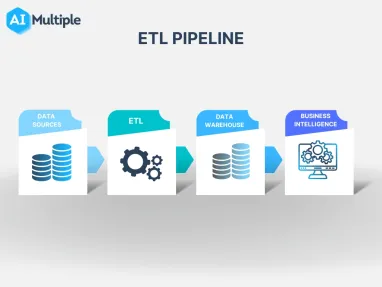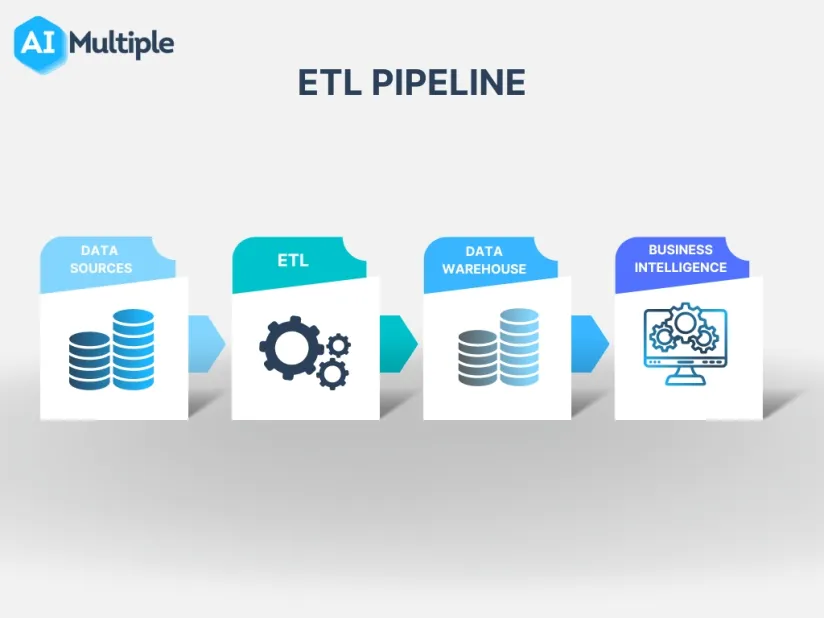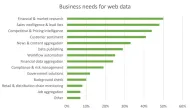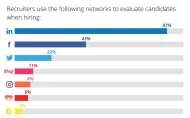The Ultimate Guide to ETL Pipeline in 2024


As businesses grow, existing systems get unsuitable to meet their changing demands. To keep up with the changing business landscape, companies must utilize tools and systems that fully support their processes and meet their needs.
However, becoming adaptive to technology trends and integrating them into existing workflows can be difficult, especially for large companies. ETL (Extract, Load, Transform) pipelines play a significant role in integrating a large amount of data between systems.
This article highlights the essential aspects of ETL pipelines, including what an ETL pipeline is, why it matters, its use cases, and how it differs from a data pipeline.
What is an ETL pipeline?
ETL, Extract, Load, Transform, is the process of collecting data from multiple databases, converting extracted data to a single format or structure, and transferring data into the target database or warehouse.
An ETL pipeline consists of three steps. These steps are as follows:
- Extract: In the first step, data is gathered from different databases or sources.
- Transform: Since data is collected from multiple sources, data might be in various formats, including semi-structured and unstructured. At this step, extracted data is converted or structured into the desired correct form. This step is crucial to place collected data into the target database.
- Load: Structured data is uploaded into the target database or data warehouse. This process is essential for data analysis. Regardless of the original format and source of the data, data analysts and decision-makers can use this data to acquire insights.
Why is an ETL pipeline essential to businesses?
Automate data collection
ETL pipeline standardizes and automates the entire process of collecting raw data from multiple data sources, such as CRM, ERP, social media platforms, etc., in different formats, including CSV, JSON, XML, and text files. It enables businesses to understand how data is generated and its format in detail.
Convert data to a common format
Businesses may need a data warehouse with data from multiple sources. Data engineers and analysts often work with data extracted from multiple sources. If you need to integrate source systems, you will have to spend much more time on data. Your company’s average spending will rise as a result of data-related costs, including from initial data collection to insight gathering. To acquire insights and a unified view of data, you must standardize the data collected from different sources. ETL pipeline will particularly help orchestrate data from various data sources.
Source: McKinsey
Frees teams up for high-value tasks
ETL pipeline makes data ready for analysts and decision-makers. It saves developers time and allows them to focus on the bigger picture. With the ETL pipeline, there is less room for errors because it eliminates the necessity for manually examining datasets and standardizing a large amount of data from many sources.
Top 3 ETL pipeline use cases/applications
Here are some examples of how ETL pipelines support your business in different processes:
- Centralization of data
ETL pipelines allow companies to centralize and standardize their data across the organization. With the ETL pipeline, companies provide access to all their relevant employees. Managing data in a unified location allows companies to improve their cross-functional collaboration.
- Data standardization
As mentioned above, data is extracted from multiple data sources in different formats. Converting all these different data types into the correct form is crucial to gain essential insights in further steps.
For instance, your team can use the ETL pipeline to extract data from CRM, ERP, or other systems to understand better how they can personalize the company’s customer services.
- Data migration
Migrating massive data without data loss or quality issues is difficult for companies. You may need an advanced technology/ tool to make the data migration process less costly.
For instance, your organization grows, and your needs change. You may find your existing ERP tool outdated and unsuitable. Then, you will look for ERP software that fully supports your changing demands. However, the real consideration here is that your data must be transferred into the new system without any data loss and quality problems. ETL pipelines assist companies in their data migration processes. It eliminates the need for manually transferring data between systems or databases.
ETL pipeline vs. Data pipeline
ETL and data pipelines are used to move a large amount of data from multiple sources and systems into other databases. Although the ETL pipeline and data pipeline are related, they differ significantly.
| ETL pipeline | Data pipeline |
|---|---|
| Is a type of data pipeline | Umbrella term for moving data between systems / databases. |
| Transforms data before it is loaded into the destination system. | May or may not transform data after it is loaded
into the system.
|
Typically works in batches, moves data to the target system
in batches.
| Perform real-time processing ( data is processed as soon as
it’s generated) or batch processing (data is collected & transferred periodically but not in real-time).
|
More on web scraping
- Data Parsing to Extract Meaningful Information From Data Sources
- 4 Steps of Web Data Integration (With Tips & Examples)
- Roadmap to Web Scraping: Use Cases, Best Practices & Tools
If you need more information regarding ETL pipeline you can reach out to us, and check out our data-driven list of web scrapers:



Comments
Your email address will not be published. All fields are required.